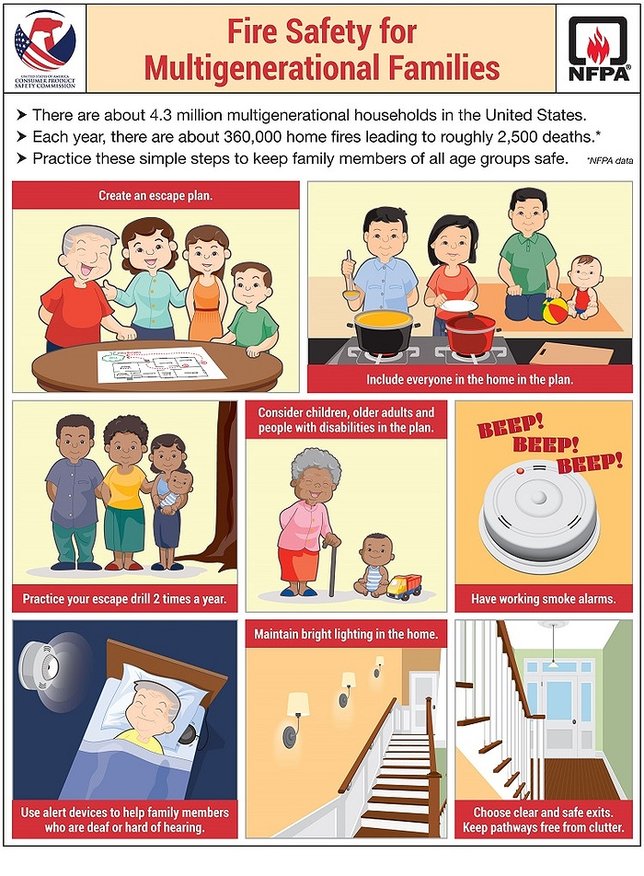Quincy, MA - January 6, 2017 - Multigenerational households are on the rise: The number of Americans living under the same roof with at least three generations has doubled since 1980. While these living arrangements offer many benefits, they also present potential fire safety challenges. With that understanding, the National Fire Protection Association (NFPA) and the U.S. Consumer Product Safety Commission (CPSC) have developed a multigenerational toolkit featuring tips and recommendations to help increase multigenerational households’ safety from fire.
“Multigenerational households may include older adults, very young children and people with disabilities who require added assistance in the event of a fire,” said Lorraine Carli, NFPA’s vice president of Outreach and Advocacy. “Home fire safety planning and prevention is critical for all families, but for households with family members who have specific needs or limitations, advance planning is paramount to ensuring everyone’s safety.”
NFPA statistics show that older adults are more than two times as likely to die in a fire as the rest of the population.
NFPA and CPSC urge members of multigenerational households to work together to make sure everyone practices the following safety measures, which help protect all family members in the event of a home fire:
- Make sure your home has working smoke alarms. You need a smoke alarm on every level, inside each sleeping room, and outside each separate sleeping area. Interconnect the alarms so when one sounds, they all sound.
- Install smoke alarms and alert devices to help family members who are deaf or hard of hearing. Alert devices, such as strobe lights, flash when the smoke alarm sounds. Pillow or bed shakers may be useful to wake a person who is sleeping. The shakers are triggered by the sound of the smoke alarm and shake people awake to warn them of a fire.
- Test your alarms at least once a month. Press each test button to make sure it is working.
- Develop a home escape plan that includes two ways out of every room and an outside family meeting place. Practice the plan twice a year with all members of the household, and make sure to share it with guests.
- Smoke alarms do not reliably wake up children. Older adults may not hear the smoke alarm. Assign someone to help children, older adults and people with disabilities escape.
- Make sure your home has bright lighting in stairways to prevent falls.
- Remove clutter to prevent trips and falls and allow for a quick escape.
- Install handrails along the full length of both sides of the stairs.
- If there is a fire, get outside quickly and stay outside. Then call 9-1-1.
- If you can’t get outside, call 9-1-1. Let the fire department know you can’t get outside. Wave a light-colored cloth or a flashlight from the window.
- If there is smoke, use your second way out. If you must escape through smoke, get low and go under the smoke.
For more fire safety tips, visit online.
About the National Fire Protection Association (NFPA)
Founded in 1896, NFPA is a global, nonprofit organization devoted to eliminating death, injury, property and economic loss due to fire, electrical and related hazards. The association delivers information and knowledge through more than 300 consensus codes and standards, research, training, education, outreach and advocacy; and by partnering with others who share an interest in furthering the NFPA mission. For more information visit www.nfpa.org. All NFPA codes and standards can be viewed online for free.










